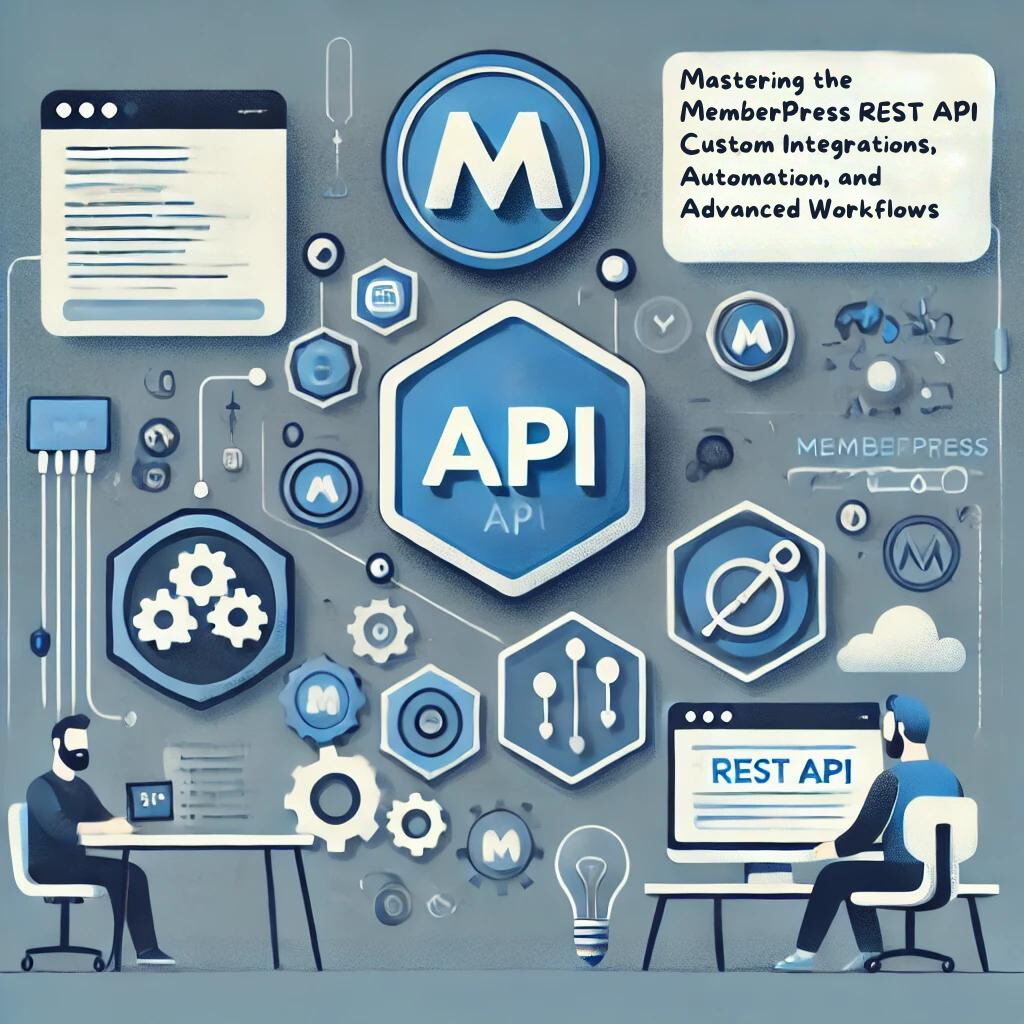🔑 Core Concepts of MemberPress API
1. Authentication
- To access the API, you must authenticate your requests. The most common way is by using API keys, which MemberPress generates for each user.
- Alternatively, you can use more advanced methods like OAuth for extra security, particularly for larger projects requiring multi-system interaction.
Example:
- Include an API key in your request headers like this:
GET /wp-json/mp/v1/members HTTP/1.1 Host: example.com Authorization: Bearer YOUR_API_KEY
2. Endpoints
- Endpoints are the specific URLs through which you can access different parts of the MemberPress system.
- The API typically uses a URL structure like this:
https://example.com/wp-json/mp/v1/{endpoint} - Common MemberPress API endpoints include:
/members: Retrieve and manage members./memberships: Manage membership plans./transactions: Handle payments and track transactions./subscriptions: Manage recurring billing and subscriptions./coupons: Create or manage discount coupons.
3. HTTP Methods
- The API uses standard HTTP methods to perform various actions:
GET: Retrieve data (e.g., get the list of members or subscriptions).POST: Create new resources (e.g., add a new member or create a new subscription).PUT: Update existing resources (e.g., modify user information or subscription status).DELETE: Remove resources (e.g., delete a member or cancel a subscription).
Example:
- A GET request to retrieve all members might look like this:
GET /wp-json/mp/v1/members Host: example.com Authorization: Bearer YOUR_API_KEY - A POST request to create a new member:
POST /wp-json/mp/v1/members Content-Type: application/json Authorization: Bearer YOUR_API_KEY Body: { "username": "newuser", "email": "newuser@example.com", "password": "securepassword" }
4. Rate Limiting
- Most REST APIs, including MemberPress, apply rate limits to prevent overuse. This ensures that the API server doesn’t get overwhelmed with requests.
- Understanding the rate limit helps you plan how many calls your scripts or applications can make within a specific time period.
5. Responses and Errors
- The API returns data in JSON format. You’ll receive detailed information about the status of your request, such as whether it was successful or if an error occurred.
- Common HTTP status codes:
200 OK: The request was successful.201 Created: A new resource was successfully created (e.g., a new member).400 Bad Request: There’s an issue with the data sent in the request.401 Unauthorized: Authentication failed (e.g., invalid API key).404 Not Found: The requested resource doesn’t exist.500 Internal Server Error: Something went wrong on the server side.
Example of a successful response for retrieving members:
{
"id": 1,
"username": "john_doe",
"email": "john@example.com",
"status": "active",
"membership_level": "Premium"
}
🔗 Connecting to Other Systems
The MemberPress API allows integration with a wide range of external tools, such as:
- CRM systems: Automatically sync members with platforms like Salesforce.
- Payment processors: Use APIs to handle custom payment workflows.
- Email marketing platforms: Sync users and membership statuses to trigger targeted email campaigns (e.g., ActiveCampaign, MailChimp).
6. Custom API Development
The flexibility of the API means developers can create custom solutions on top of MemberPress:
- Custom dashboards: Build external dashboards for site admins to manage members, view reports, and handle payments outside of WordPress.
- Mobile apps: Integrate your membership data into custom-built mobile apps for users to manage their subscriptions or access content on the go.
